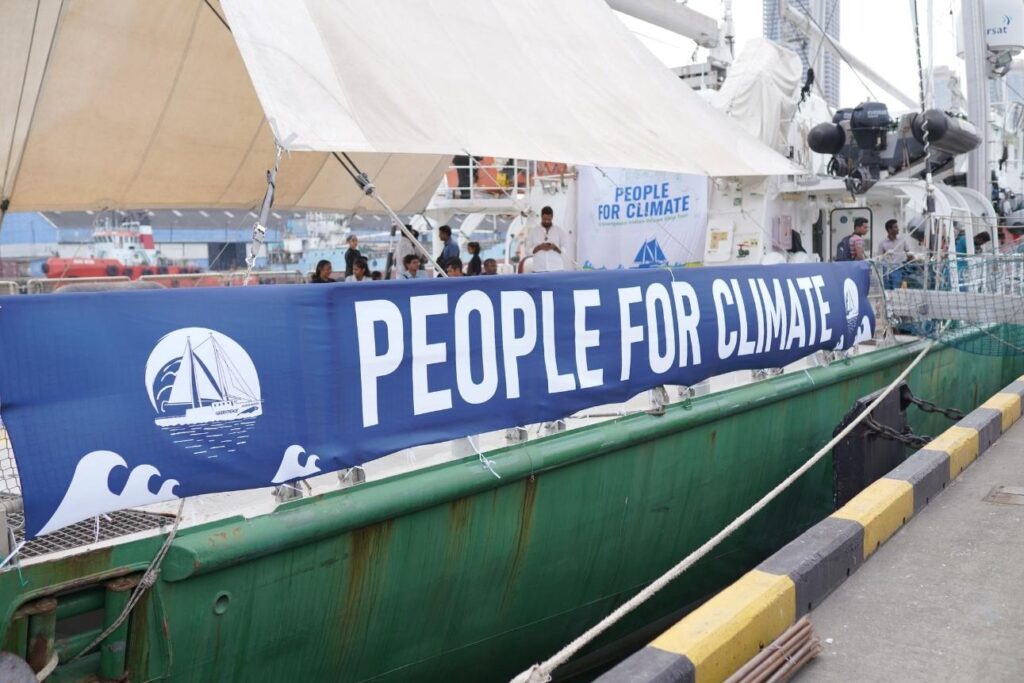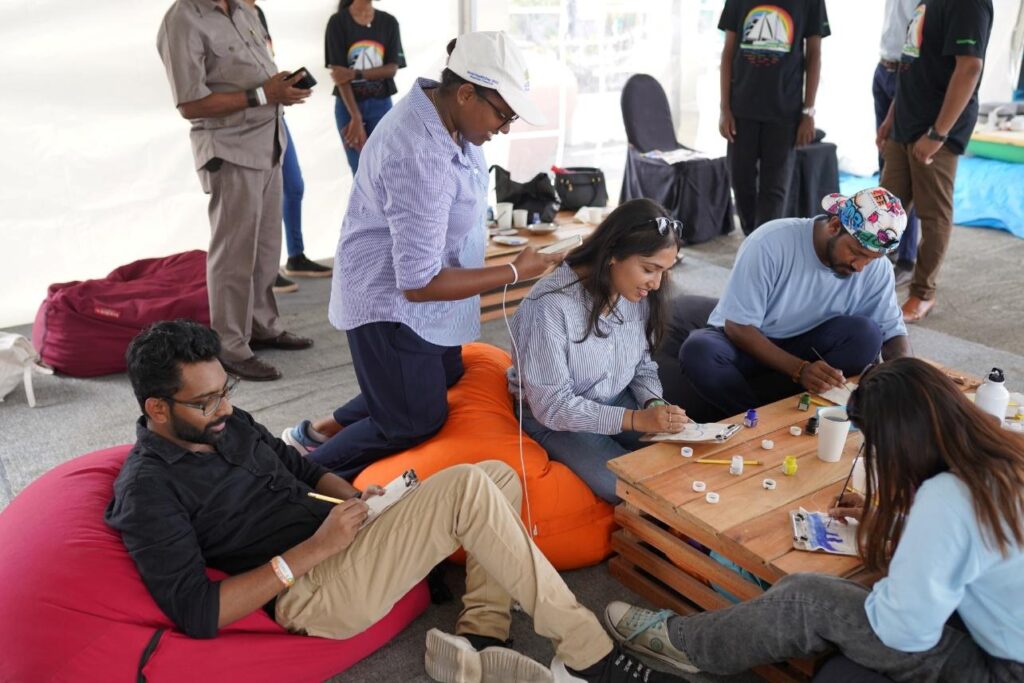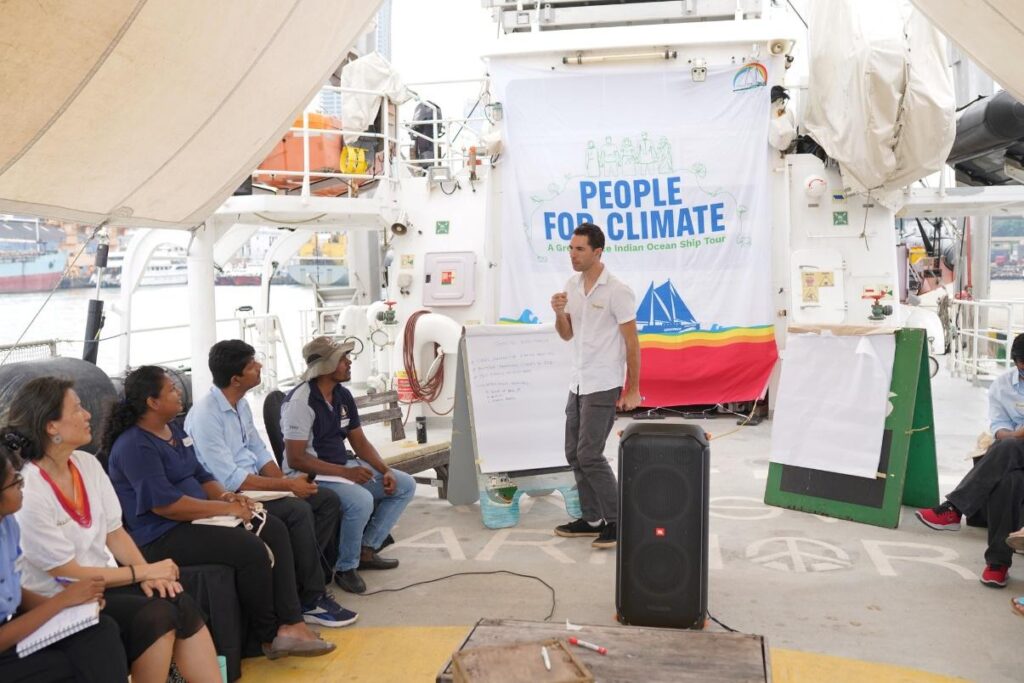Physical Address
23,24,25 & 26, 2nd Floor, Software Technology Park India, Opp: Garware Stadium,MIDC, Chikalthana, Aurangabad, Maharashtra – 431001 India
Physical Address
23,24,25 & 26, 2nd Floor, Software Technology Park India, Opp: Garware Stadium,MIDC, Chikalthana, Aurangabad, Maharashtra – 431001 India

Climate Fact Checks recently got the chance to visit Greenpeace’s iconic vessel, the Rainbow Warrior, at the Colombo Port as part of its Indian Ocean Tour 2024. Our team caught up with Ms. Nischita Verrendra, the Communications and Media Manager for Greenpeace South Asia/India, who explained the significance of The Rainbow Warrior’s notable stop at the Port of Colombo on February 13th for a 6-day tour.
Establishment of Regional Headquarters in Sri Lanka Marks Strategic Shift Towards Broader Engagement
The communications and Media Manager elaborated on Greenpeace’s decision to establish its South Asian Headquarters in Sri Lanka. Since the organisation has historically focused its efforts on India, the move to develop a fully functional regional headquarters in Sri Lanka with dedicated resources marks a strategic shift towards broader engagement throughout South Asia.
The Rainbow Warrior’s visit encompassed a comprehensive 6-day program from February 13th to 18th, featuring diverse events to engage local communities, youth representatives, policymakers, stakeholders, social media influencers, media outlets, educational institutions, donors, volunteers, and supporters in Sri Lanka.
The overarching goal is to foster collaborative action on pressing environmental issues such as climate change, pollution, and the conservation of marine biodiversity.

Rainbow Warrior at Colombo Port

Recreational Activities inside the ship

Discussions and Awareness Sessions Inside the Rainbow Warrior
Photo Credit Goes to: Greenpeace South Asia FB
Speaking at the welcome ceremony of the much-anticipated Rainbow Warrior ship, Jehan CanagaRetna, Environmentalist and Greenpeace South Asia board member, stated, “Here in Sri Lanka, we’re experiencing an environmental crisis, with climate change disrupting our agriculture and livelihoods. Despite our minimal role in contributing to climate change, as a biodiversity hotspot in Southern Asia, we’re disproportionately impacted. It’s imperative for us, alongside Greenpeace South Asia and other local environmental movements, to advocate for a dedicated climate change foundation in Sri Lanka.”
The decision to expand Greenpeace’s footprint in South Asia is driven by a recognition of the urgent need to address the detrimental effects of global climate change, particularly on the South Asian population.
With over 1.5 billion people across eight different countries, South Asia boasts some of the world’s most ecologically sensitive areas. However, it also faces formidable challenges stemming from multidimensional poverty, a heavy reliance on natural resources, and heightened vulnerability to extreme weather events exacerbated by climate change.
The impact of climate change on South Asia is profound, with over 800 million individuals residing in areas identified as ‘future climate change hotspots,’ where living conditions may become increasingly uninhabitable, said Binu Jacob, Executive Director, Greenpeace South Asia/India.
Shifts in weather patterns, rising sea levels, warming oceans, and an uptick in extreme weather events such as cyclones, storms, droughts, and floods all pose grave threats to terrestrial and marine ecosystems. Such disruptions not only imperil biodiversity but also aggravate economic and social disparities, intensifying poverty and food insecurity and hindering access to essential services such as healthcare, clean water, and education.
Moreover, the economic ramifications of climate change in South Asia are staggering, with projections suggesting a potential 9% annual loss to the regional economy by 2100 if current emission trends persist.
Furthermore, the region’s historical exploitation, rooted in colonialism, has significantly contributed to environmental degradation and heightened susceptibility to climate change impacts, compounding existing vulnerabilities.
Despite the severity of these challenges, South Asian countries often find themselves marginalised in global climate discourse, with their voices and concerns relegated to the periphery. Thus, there exists a pressing need for the region to unite as a cohesive force, advocating for greater accountability from historical polluters, governments, and corporations and championing measures that safeguard the survival and resilience of its populace in the face of the climate crisis.
Comments are closed.
Hello to every one, it’s truly a pleasant for me to pay a visit
this site, it includes important Information.
https://virtual-local-numbers.com/countries/6-spain.html